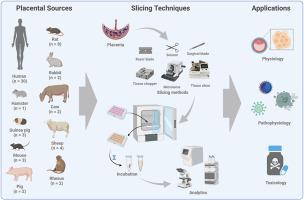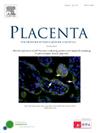Placental slice techniques in physiology, pathophysiology, and toxicology: A systematic review with a focus on precision-cut slices
IF 2.5
2区 医学
Q2 DEVELOPMENTAL BIOLOGY
引用次数: 0
Abstract
Placental precision-cut tissue slices offer an advanced in vitro model that preserves tissue architecture and microenvironment, improving physiological relevance over traditional methods such as animal models and cell lines. This systematic review summarizes the methods and applications of placental slices in research.
A PRISMA-guided systematic review was conducted in PubMed and Embase to identify studies involving slicing techniques in placenta-related research published up to June 6, 2025. Primary articles using human or animal placental slices for culture were included. Key study variables, including study aims, placenta characteristics, slice techniques, culture conditions, viability assessments, and main findings were extracted and analyzed.
A total of 52 studies were included. Of these studies, 30 used human placenta (90.0 % from term pregnancies) and 24 used animal placentas (87.6 % late-term). Slicing methods were described in 33 studies, with 14 of those were manually prepared. The most commonly used culture condition was Krebs-Ringer bicarbonate buffer (36.5 %), combined with 95 % O2 and 5 % CO2 (79.5 %). Only eight studies conducted viability assessments, with histological morphology being the most frequently used approach. Based on research focus, the studies were categorized into physiological (69.2 %), pathophysiological (17.3 %), and toxicological (13.4 %) studies.
In conclusion, this review summarizes current applications of placental slicing techniques and highlights the methodological diversity across studies. The variability in approaches underscore the need for standardized protocols, while the collective evidence supports the use of placental slices as a promising model for investigating placental physiology, pathophysiology, and toxicology.

胎盘切片技术在生理学,病理生理学和毒理学:一个系统的回顾,重点是精确切割切片。
胎盘精确切割组织切片提供了一种先进的体外模型,保留了组织结构和微环境,提高了传统方法(如动物模型和细胞系)的生理相关性。本文就胎盘切片的方法及其在研究中的应用作一综述。在PubMed和Embase上进行了一项prisma引导的系统综述,以确定截至2025年6月6日发表的涉及胎盘切片技术的研究。包括用人或动物胎盘切片进行培养的主要文章。提取并分析了主要研究变量,包括研究目的、胎盘特征、切片技术、培养条件、活力评估和主要研究结果。共纳入52项研究。在这些研究中,30项使用人胎盘(90%来自足月妊娠),24项使用动物胎盘(87.6%来自足月晚期)。33项研究描述了切片方法,其中14项是手工制备的。最常用的培养条件是克雷布斯-林格碳酸氢盐缓冲液(36.5%),95% O2和5% CO2(79.5%)混合。只有8项研究进行了可行性评估,其中组织学形态学是最常用的方法。按研究重点分为生理研究(69.2%)、病理生理研究(17.3%)和毒理学研究(13.4%)。总之,本文综述了目前胎盘切片技术的应用,并强调了不同研究方法的多样性。方法的可变性强调了标准化方案的必要性,而集体证据支持使用胎盘切片作为研究胎盘生理学、病理生理学和毒理学的有前途的模型。
本文章由计算机程序翻译,如有差异,请以英文原文为准。
求助全文
约1分钟内获得全文
求助全文
来源期刊

Placenta
医学-发育生物学
CiteScore
6.30
自引率
10.50%
发文量
391
审稿时长
78 days
期刊介绍:
Placenta publishes high-quality original articles and invited topical reviews on all aspects of human and animal placentation, and the interactions between the mother, the placenta and fetal development. Topics covered include evolution, development, genetics and epigenetics, stem cells, metabolism, transport, immunology, pathology, pharmacology, cell and molecular biology, and developmental programming. The Editors welcome studies on implantation and the endometrium, comparative placentation, the uterine and umbilical circulations, the relationship between fetal and placental development, clinical aspects of altered placental development or function, the placental membranes, the influence of paternal factors on placental development or function, and the assessment of biomarkers of placental disorders.
 求助内容:
求助内容: 应助结果提醒方式:
应助结果提醒方式:


